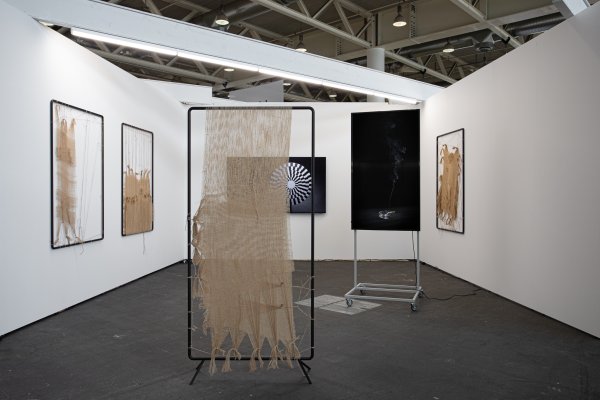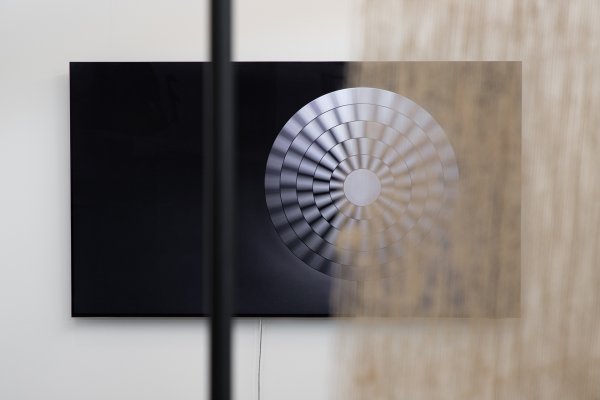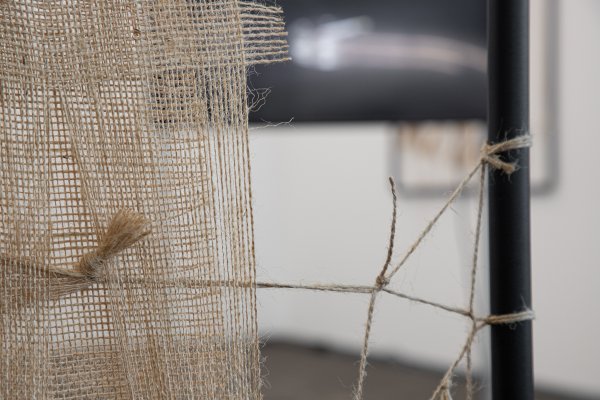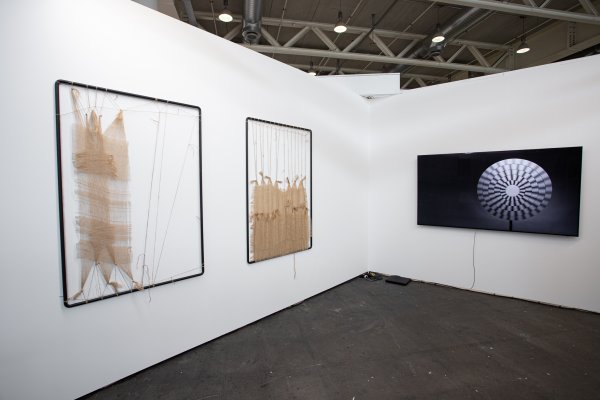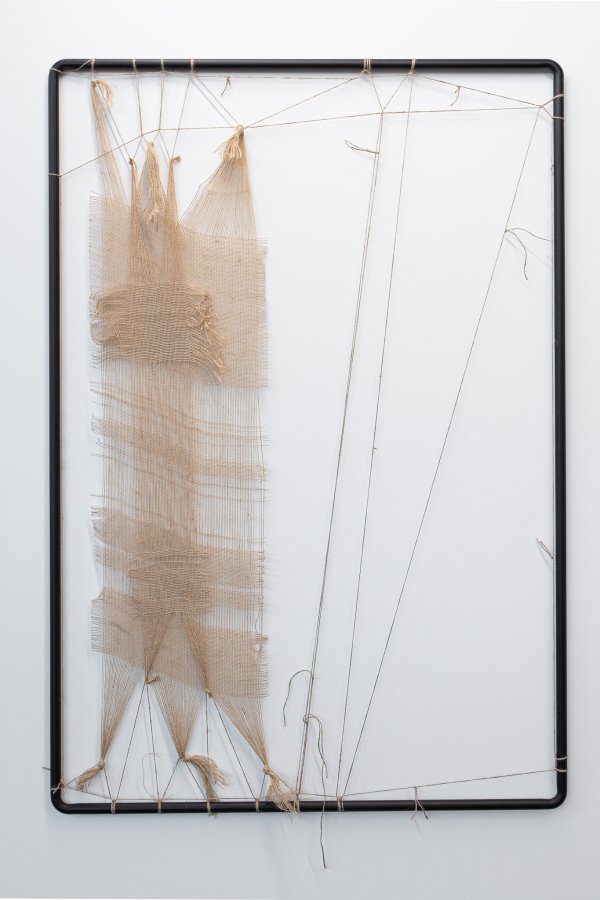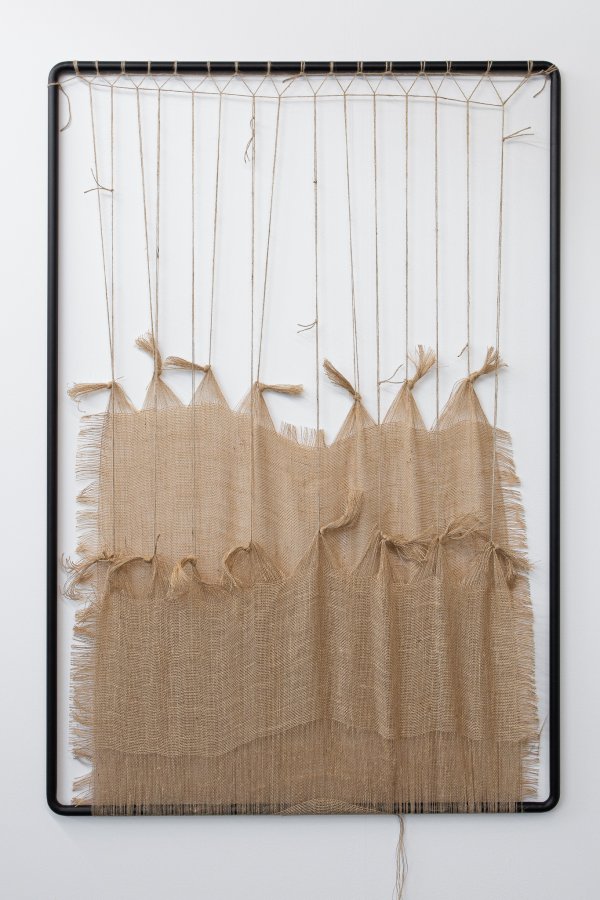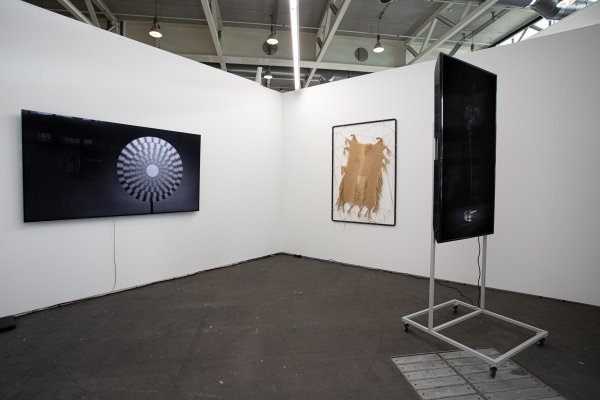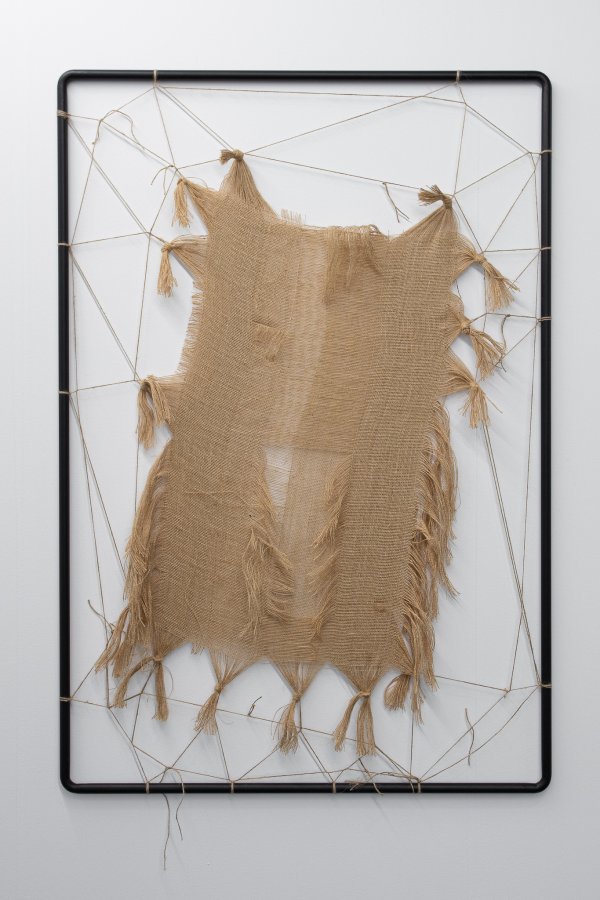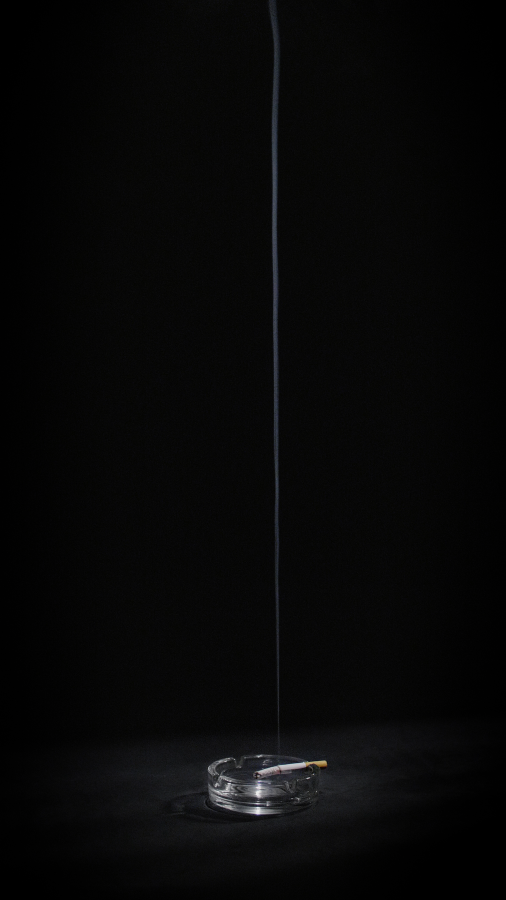Roman Štětina
Liste Art Fair Basel 2023
12.6.2023–18.6.2023- text by Jiří Havlíček (EN)
The illusion of motion perception in films is made possible by the imperfection of the human eye. The term for this attribute is persistence of vision. Most pre-cinematic devices–rotating discs and cylinders–were based on this visual phenomenon. When viewed through a narrow slit, limiting the viewer’s angle of vision, they created the impression of fluent motion. Devices like the phenakistiscope, the Wheel of Life and the zoopraxiscope progressively led to the invention of cinema at the end of the nineteenth century. The stroboscopic effect has traditionally been attributed to persistence of vision and later often to (misinterpretations of) beta movement and/or the phi phenomenon known from Gestalt psychology. The exact neurological principles are not yet entirely clear, as Wikipedia informs us. Not only does the stroboscopic effect alter the perception of real motion, under particular conditions it can simulate motion that does not actually exist.
We can observe this in ROMAN ŠTĚTINA’S first video TRANSIT (2022-23). When the wheel begins to accelerate, everything seems normal. The wheel is spinning just as one would expect. However, as soon as the wheel starts gaining considerable speed, an anomaly occurs. At a certain point, the spin of the wheel appears to slow down gradually, and then, for a brief moment, it stops completely. When it resumes, it is spinning in the opposite direction. Is this an optical illusion or a real phenomenon? Actually, it is a bit of both. This effect is observable mainly in movies. However, we also observe the same illusion in real life. There are two theories currently circulating in this particular field of study. The first relates to the visual cortex, which acts almost like a movie camera, processing sensory input in temporal packets, taking a series of snapshots and then creating a continuous scene. Perhaps our brain processes these still images in the same way as it does the frames in a movie, and the perceptual glitch results from a limited frame rate. According to the theory of perceptual rivalry, adjacent spinning wheels are observed by people as if they were switching direction independently of each other. According to the movie camera theory, the two wheels should not behave differently, as the frame rate is the same for everything in the visual field. This has led some scientists to a theory that explains the effect as a result of perceptual rivalry, which occurs when the brain creates two different interpretations of one situation, as a way to explain an ambiguous scene. The perception that is dominant is what we believe (in this case, that the wheel is actually spinning backwards).
ROMAN ŠTĚTINA’S textile objects MOIRÉ PATTERNS (2023) are reminiscent of large, broken screens. Metal frames shaped like displays are woven with jute rope in such a way that movement around them creates the moiré effect. The moiré pattern was another optical illusion used in pre- cinema optical devices. For the moiré interference pattern to appear, the two patterns must not be completely identical, but rather displaced, rotated, or have slightly different pitch. The term originates from moire (moiré in its French adjectival form), a type of textile, traditionally made of silk. The watered appearance was usually created by the finishing technique called calendering – the fabric was folded lengthwise in half with the face side inward, and with the two selvedges running together side by side. During the Middle Ages, moire was held in high esteem and was, as currently, used for women’s dresses, capes, and for facings or trimmings. The term moiré PATTERNS itself originated through the specific interaction of several languages. Moire probably represents the English mohair borrowed into French and back into English. Mohair comes from the Arabic mukhayyar (ّرَ َيخُم , lit. “chosen”), a cloth made from the wool of the Angora goat. Mukhayyar (ّرَ َيخُم ) descends from khayyara (ّريخ , lit. “he chose”). “Chosen” is meant in the sense of “a choice, or excellent, cloth”.
Moiré patterns are commonly seen on television screens when a person is wearing a shirt or jacket of a particular weave or pattern. This is due to interlaced scanning in televisions and non-film cameras. A pattern on an object being scanned can interfere with the shape of the light sensors to generate unwanted artifacts. As the resolution of recording devices increases, the moiré effect comes about on increasingly fine structures. The delicate patterns on shirts that in earlier times created a disruptive effect can once again be used thanks to the high resolutions currently available. On the contrary, unwanted artifacts are today generated by relatively roughly woven tablecloths with no visible pattern that used to present no problems.
ROMAN ŠTĚTINA’S second digital video FILTER (2021-23), lasting a couple of minutes, captures a simple scene, in which a lit cigarette placed in an ashtray goes out. Without human intervention, without smoke being inhaled into lungs, the cigarette turns into ashes and smoke. This seemingly banal situation has been a rare sight since the ban on the sale of the original cigarettes in 2012. For safety reasons, only self-extinguishing cigarettes are available on the European market. Cigarettes have appeared in films since the beginnings of cinematography. Film history is written in smoke from the very beginning. In the first film, experiments with the magic lantern, static scenes were projected on floating clouds of smoke. Cigarettes are an important part of a number of iconic film scenes, in which they visualize invisible breath or help to form the overall atmosphere of the shot. They play a crucial role in film noir. Smoke decreases contrast and makes the darkest shadows more visible. The smoke screen serves as a metaphor for secrecy and hiding the truth.
Fake news, fake profiles, deepfake technology. We can’t see what we don’t believe in. At the same time, we only see what our visual cortex believes. Displays disintegrating into thousands of pieces; images blurred by showers of glass fragments; sharp objects whizzing through the air, a constant source of danger. When one of these shards impales the eye, vision will be lost. Or we will start to see sharply.
